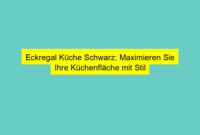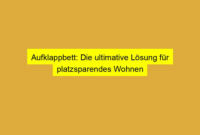Greetings, Sanctuaryvf Friend!
Welcome to our informative journal article about the World Bank. In this piece, we will delve into the important role that this international financial institution plays in global development. So, let’s begin our journey of exploration!
Introduction
The World Bank, officially known as the International Bank for Reconstruction and Development (IBRD), was established in 1944, in the aftermath of World War II. Its primary goal is to reduce poverty and promote sustainable development in developing countries by providing loans, grants, and expertise.
Over the years, the World Bank has evolved and expanded its role to address various global challenges such as climate change, social inequality, and economic instability. With a membership of 189 countries, the World Bank works collaboratively with governments, civil society organizations, and other international entities to achieve its objectives.
Let us now explore the strengths and weaknesses of the World Bank.
Strengths of the World Bank
1. Financial Resources 🌍
The World Bank has substantial financial resources at its disposal, allowing it to provide significant support to developing countries. Its financial strength enables it to fund projects and initiatives that promote sustainable economic growth and poverty reduction.
2. Global Reach 🌎
With its vast network of member countries, the World Bank has a truly global reach. This expansive reach allows it to address diverse challenges faced by developing nations in different regions of the world. Its presence and influence facilitate the sharing of best practices and the coordination of efforts towards common goals.
3. Technical Expertise 🏢
The World Bank possesses a wealth of technical expertise and knowledge in various sectors such as agriculture, education, health, and infrastructure. It leverages its experts to devise innovative solutions and guide countries in implementing effective development strategies.
4. Data-driven Approach 📊
One of the World Bank’s strengths lies in its data-driven approach to development. It collects, analyzes, and disseminates valuable data that helps governments and policymakers make informed decisions. By providing reliable data, the World Bank aids in the formulation of evidence-based policies that can lead to sustainable development.
5. Multilateral Collaboration 🤝
The World Bank fosters collaboration among countries, development institutions, and civil society organizations. Through its partnerships, it promotes knowledge exchange, facilitates capacity building, and encourages joint initiatives that have a transformative impact on developing nations.
6. Poverty Reduction Focus 🎯
Addressing poverty is at the core of the World Bank’s mission. It focuses on designing projects and policies that directly target poverty alleviation, aiming to improve the lives of the most vulnerable populations. By prioritizing poverty reduction, the World Bank remains dedicated to its role as a catalyst for positive change.
7. Adaptability to Changing Global Landscape 🌍
The World Bank continuously adapts to the evolving global landscape, recognizing emerging challenges and opportunities. It strives to stay relevant and responsive to the needs of its member countries, ensuring its initiatives remain effective in an ever-changing world.
Weaknesses of the World Bank
1. Complex Bureaucracy 🏛️
As an international institution, the World Bank operates within a complex bureaucratic framework. The bureaucratic processes can sometimes be lengthy and intricate, resulting in delays in project implementation or decision-making. Simplifying and streamlining these processes could enhance the institution’s efficiency.
2. Lack of Representation 🌍
Despite having a large membership, the World Bank’s governance structure is criticized for its limited representation of developing countries. The voting power of member countries is proportional to their financial contributions, which gives more influence to wealthier nations. This imbalance raises questions about the institution’s legitimacy and democratic accountability.
3. Conditionalities Debate 📜
The World Bank’s lending practices have historically been accompanied by policy conditions known as conditionalities. Critics argue that these conditions, often related to economic liberalization and structural reforms, may negatively impact the sovereignty and autonomy of recipient countries, leading to potential social and economic disruptions.
4. Risk of Debt Burden 💰
While the World Bank aims to support economic development, its loans can potentially contribute to a country’s debt burden. If not managed effectively, these debts could become unsustainable, hindering long-term development prospects and placing additional strain on the economies of recipient nations.
5. Limited Environmental Focus 🌱
Although the World Bank has recently increased its emphasis on environmental sustainability, some argue that its projects may still have adverse ecological impacts. Striking a balance between economic development and environmental preservation remains a challenge, and the World Bank must continue to strengthen its environmental safeguards.
6. Cultural Sensitivity 👥
The World Bank operates across diverse cultural contexts, and ensuring cultural sensitivity in its projects and policies can be challenging. To truly understand and address the unique needs of each community, the World Bank should prioritize local participation and engage in meaningful consultations during project planning and implementation.
7. Evaluation and Accountability 📋
Measuring the impact of World Bank interventions and ensuring accountability can be complex tasks. Robust monitoring and evaluation mechanisms must be in place to assess the effectiveness and efficiency of projects. Enhancing transparency and accountability will bolster the institution’s credibility and facilitate learning from past experiences.
Table: The World Bank – Core Information
| Type of Organization | International Financial Institution |
|---|---|
| Established In | 1944 |
| Headquarters | Washington, D.C., United States |
| Membership | 189 countries |
| Mission | To reduce poverty and promote sustainable development |
Frequently Asked Questions (FAQs)
1. What are the criteria for a country to join the World Bank?
The World Bank has specific eligibility criteria for countries to become members. These criteria include factors such as not being a member of other international financial organizations, political independence, and a willingness to comply with the Bank’s principles.
2. How does the World Bank raise funds for its operations?
The World Bank raises funds through a combination of sources, including member country contributions, borrowing from financial markets, and reflows from previous loans. It also issues bonds in international capital markets and raises funds for specific initiatives through partnerships with governments and private sector entities.
3. How does the World Bank ensure the quality of its projects?
The World Bank maintains rigorous project appraisal and supervision procedures. Projects undergo thorough analysis, including assessments of their economic, social, and environmental impacts. Regular monitoring and evaluation are conducted throughout implementation to ensure the projects meet the desired objectives and outcomes.
4. What role does the World Bank play in promoting gender equality?
The World Bank recognizes gender equality as a critical element of sustainable development. It works toward promoting women’s empowerment, reducing gender gaps, and supporting gender-responsive policies and programs in its member countries. The institution also assists countries in collecting gender-disaggregated data to better understand and address gender disparities.
5. Can the World Bank cancel a country’s debt?
The World Bank does not have the authority to unilaterally cancel a country’s debt. However, it can provide debt relief through various mechanisms, such as the Heavily Indebted Poor Countries (HIPC) Initiative and the Debt Service Suspension Initiative (DSSI), which aim to alleviate the burden of debt on the world’s poorest nations.
6. How does the World Bank support climate change mitigation and adaptation?
The World Bank is committed to addressing climate change and supporting countries in their climate action efforts. It provides funding for projects that promote renewable energy, sustainable infrastructure, and climate resilience. Additionally, the institution helps countries access climate finance and facilitates knowledge-sharing on climate-related issues.
7. How can individuals contribute to the World Bank’s mission?
Individuals can contribute to the World Bank’s mission by staying informed about global development challenges, engaging in discussions, and supporting organizations that work towards poverty reduction and sustainable development. By advocating for equitable policies and raising awareness, individuals can play a vital role in shaping the global development agenda.
Conclusion
The World Bank, with its financial resources, global reach, and technical expertise, plays a significant role in fostering global development. However, it also faces challenges related to bureaucracy, representation, and environmental sustainability. Through continuous improvement, adaptation, and increased accountability, the World Bank can further enhance its effectiveness in eradicating poverty and promoting sustainable development.
We invite you to explore further, learn more about the World Bank, and engage in discussions that can contribute to positive change. Together, we can strive for a better future for all.
Take action today!
Closing Words
As we conclude this article, it is important to note that understanding the World Bank’s strengths and weaknesses enables us to hold it accountable and contribute to its ongoing evolution. Implementing sustainable development practices requires collective efforts, and we all have a role to play.
Let us embrace the opportunity to create a more equitable and prosperous world for current and future generations. Together, we can make a difference!




